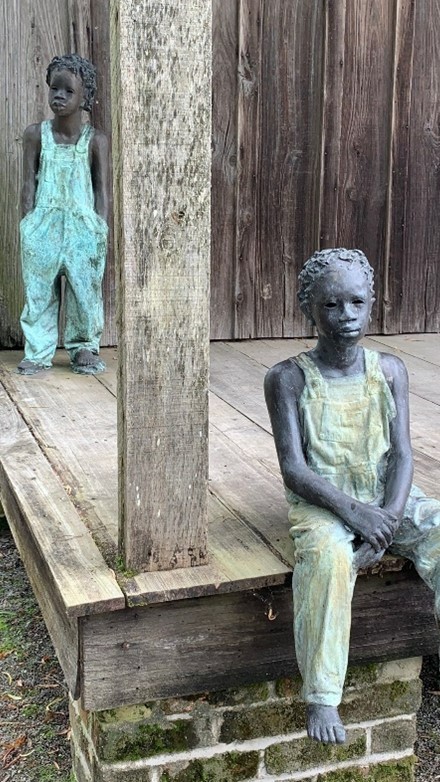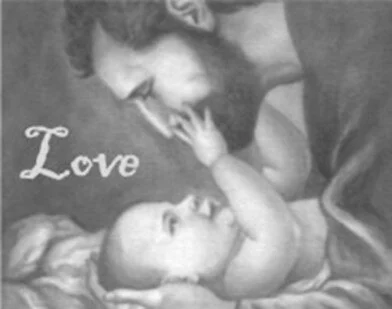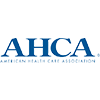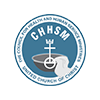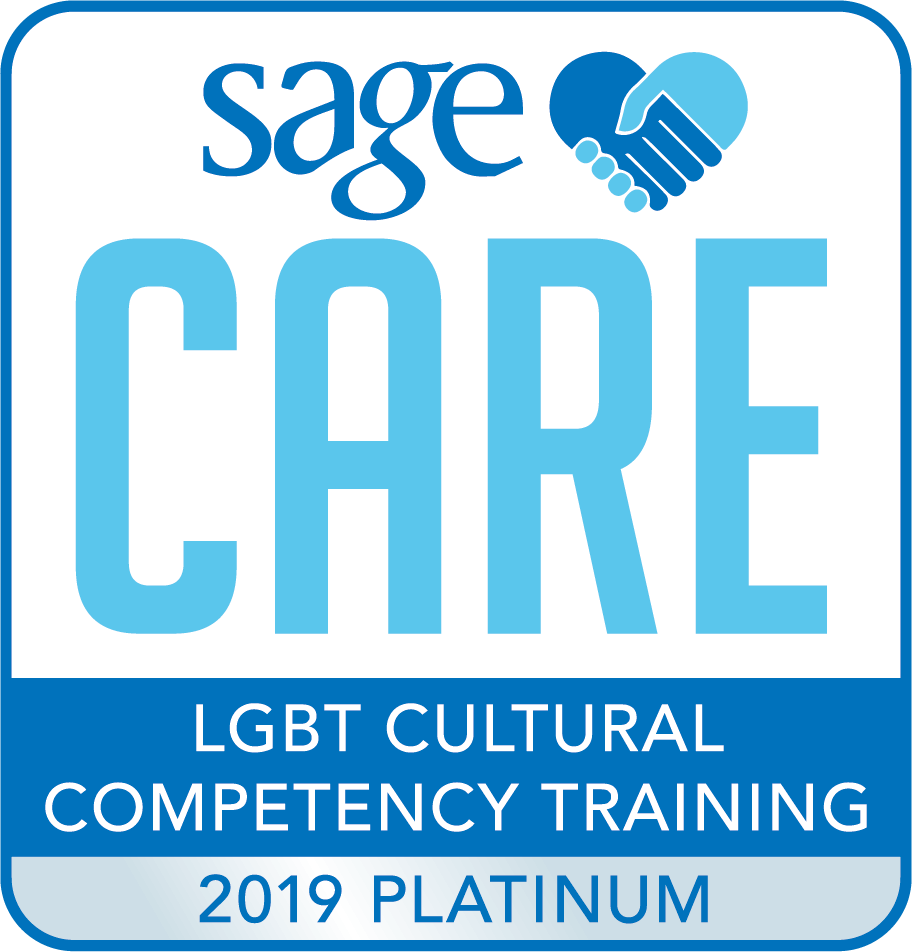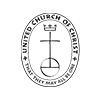Clarity is something that I didn’t know I needed, until it was pointed out to me that my world was actually very blurry. I was in the fifth grade and it was the very first time our family had traveled about 15 miles to visit the first new box store in the Cleveland metro area. Okay, we didn’t call K-mart a “box store” at the time, but the very large building without interior walls really was like being in an oversized box.
None of us had been there yet. And within moments of walking in the door, my father indicated that he was going to one department and pointed in a specific direction. My mom said she was going to another department and pointed in the opposite direction. I stood there confused. “How do you know where those departments are?” I asked. They looked at each other and then at me. One of them said, “because of the large signs with the really big letters on them hanging from the ceiling”. I looked up and was still a bit confused. I could read some of the ones close by. But the ones further back were a blur. The appointment for me to get my eyes checked was made shortly thereafter. Yes, I am near-sighted.
Suddenly with my new tortoise shell glasses, I experienced unexpected clarity. It was unexpected because I didn’t know that things far away could look any other way than blurry. In the intervening 50 years since, I know that when things from afar are less than clear that a new set of lenses is probably in my future. Although I wore that first pair of glasses from 5th to 9th grade, my lack of visual clarity is now an annual thing.
How often have I thought I was “seeing” things clearly when in fact there was much that I had been unable to comprehend? And then unexpectedly an idea sheds light and suddenly new insights come into focus!
My first inclination in reflecting on “unexpected clarity” was one of those few times in my life when a significant life decision was finally made. But clarity doesn’t have to be related to big life-changing decisions and more often comes in smaller ah-ha moments.
In the summer of 2019 we travelled to New Orleans for a visit. We ventured out of the city one day having seen a brochure about some places up the Mississippi. The focus of the Whitney Plantation on slavery. It is named after the first black mayor of New Orleans whose ancestors had been enslaved on that land. The whole experience is told through the lens of those who were enslaved.
How Did I Not Know This?
I consider myself a fairly educated person. My family had visited a wide variety of spots over the years including former plantations. But on this visit, there was unexpected clarity for me in ways that surprised me. The clarity revealed itself in visceral ways. I felt it in my body. I kept thinking, “how did I not know this?” or “why didn’t we talk about this in history class”? Uprisings of enslaved people which ended in horrific violence. The rise in value and the expectation placed on child-bearing women after the trans-Atlantic slave trade was closed in 1809—of course the owners needed to replenish their work force! And the perpetual mistreatment and violence against the enslaved men and women to keep them in their place. I could go on, but hopefully you get the picture. Rage. Sadness. Anger. Guilt. All of these were flowing through my body.
We travelled down the road that afternoon and visited another plantation which was presented through the story of the plantation owner’s family. There, the story was more “familiar” and much tamer. My clarity came through the experience at the Whitney.
Two weeks later, we were driving to Nebraska. We happened to catch a radio interview with an author who was talking about the events that occurred immediately after the Civil War and particularly in the vacuum of President Lincoln’s assassination. I had unexpected clarity about reconstruction. Mind you, the clarity was small, but the new insights after just having been to southern Louisiana were unexpected.
From Nebraska we headed to Topeka, Kansas visiting family. Since we had last visited, the National Park Service opened a new site–the school building where the story of Brown vs. Education is told. Again, through my interactions with the exhibits, I was aware of more clarity in regard to historical connections—as far back as the days of enslavement as told at the Whitney and with new insights from the radio interview. They all added depth connecting my understanding with the larger contemporary racial disparities around us.
Clarity is a Process of “Ah-Ha”
Clarity doesn’t necessarily mean that everything is completely understood. But through the gift of the cycles of education and reflection, clarity for me is the process of “ah-ha” when things that were once blurry become clearer, if for a time. And then more adjustments are needed as we continue to grow and see anew the signs around us—even the ones with the message as big and obvious to others as very large letters hanging from the ceiling over my head.
Just as I need to update the lenses of my glasses, so too do I need to expect that there will always be potential opportunities for clarity to surprise me into seeing a new side of life. The things that I need for clarity may be different from everyone else around me, but that is okay. My eye prescription is unique to my eyes only. And in continuing to seek regular check-ups with my friendly eye doctor, I know that I will be able to keep my vision sharp and in focus.
Seek Opportunities for Expanded Clarity
So too do I need to seek opportunities to test the clarity of my perception of the world around me. I need to intentionally be open to hearing about the experiences of others. I need to be curious about the perspectives of those who are different from myself. I need to notice when things that I thought I knew begin to blur. And I need to consciously be aware when a new lens is available to show me a clearer understanding of life.
I give thanks for the continual process of the smaller unexpected moments of clarity. I just need to pay attention and welcome them as I continue to learn and grow, reflect and stretch toward God’s vision of abundant life.
For Reflection (either individually or with a group)
Read the blog. Read it a second time, maybe reading it aloud or asking someone else to read it aloud so you can hear it with different intonation and emphases. Then spend some time with the following questions with anything that helps you reflect more deeply.
- When was the last time you thought you were “seeing” things clearly when in fact there was much that you had been unable to comprehend? Why do you think that was the case?
- When have you had an “Ah Ha” moment of clarity? What actions, if any, did you take to lead up to that moment?
- To what perspectives are you curious to know more? What steps might you take to learn more about the perspectives of people different than yourself?
Download a pdf including the Reflection Questions to share and discuss with friends, family, or members of your faith community small group.
5/11/23 14:00
View all articles by:

